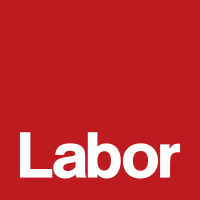Private Members’ Statement
Mr ANOULACK CHANTHIVONG (Macquarie Fields) (12:17): I have two items that are most valuable to me. The first item is a signed black and white picture of Labor Prime Minister Gough Whitlam pouring soil into the hands of respected Aboriginal elder Vincent Lingiari to symbolise officially the transfer of Wave Hill station back to the Gurindji people. It has an elevated place at my home—on the top of my buffet and to the left of my work desk. I see the photo many times a day as I leave and enter the house and I cannot miss it when I am working at my desk. The second item is Selma Napanangka Tasman's paintingWanakiji Jukurrpa or Bush Tomato Dreaming. Selma is a female artist from the remote community of Yuendumu, 1,800 kilometres south-east of Darwin. Wanakiji Jukurrpa hangs proudly in my Parliament House office and reflects our Indigenous community's depth of artistic talent, imagination and spirituality.
We are approaching the fiftieth anniversary of the 1967 Australian referendum to change the Constitution which recognised Aboriginal Australians in the census and for the Commonwealth to make laws to benefit Aboriginal people. The result was unmatched, not only for its 90.77 per cent "yes" vote for change but also for a referendum that reinforced the nation's values in its continued march towards inclusivity and reconciliation. The referendum recognised Indigenous Australians with dignity and respect. The laws of our land formally and finally removed any ambiguity in our collective responsibilities to our first Australians.
That is why the two items I referred to earlier are important to me. They are a daily reminder of how far we have come in our march to reconciliation but also how much further we need to go to achieve our national targets to close the gap. The Prime Minister's latest Closing the Gap report clearly shows some progress has been made but it does not hide the fact that halving the gap in reading and numeracy for Indigenous students by 2018, halving the gap in employment by 2018 or closing the gap in life expectancy by 2031 are all not on track. I am not a pessimist by nature. These results reinforce to all of us in Parliament and to all Australians there is more work to be done. The reconciliation journey to close the gap is not owned by a particular political party, parliamentarian or prime minister. It is a collective national project with a single purpose; to improve all-of-life indices for Indigenous Australians to make them truly equal to non-Indigenous Australians. Our aspirations to close the gap are based on our communal values of hope, opportunity and respect.
Reconciliation starts with an understanding and a recognition of the intergenerational injustices inflicted on Indigenous Australians. The injustices have cumulatively contributed to the current Indigenous disadvantage. But genuine reconciliation does not end with warm words of acknowledgement. Reconciliation must be continued with active engagement, participation and programs which must deliver tangible outcomes. Economic resources alone cannot help us reach our national goals. They must be accompanied with energy, empowerment and empathy, not just from Indigenous Australians but from all of us. When less than 3 per cent of the national population is significantly over-represented in high rates of suicide, incarceration, lower life expectancy and poorer health outcomes, and when the same population is severely under-represented in educational and employment attainment, then this disparity sits uncomfortably with our nation's values of never leaving our fellow Australians behind.
Some will argue and have argued that this unacceptable situation is purely the fault of the individual and their inability to accept responsibility. Such an argument does not take into account the institutional disadvantage that Indigenous Australians have experienced for generations and its community role in producing poorer life outcomes. Others will argue and have argued that more interventionist programs are required. This argument might be well-meaning but does not give enough recognition to the level of resilience, self-determination and individuality of Indigenous Australians and their desire to be self-empowered, to make a difference. The answer lies somewhere in between. The photo of Gough Whitlam pouring sand into Vincent Lingiari's hand and Selma's Bush Tomato Dreamingpainting reminds me each and every day of my responsibility to advance the living standards of our Indigenous Australians. Despite the struggles, setbacks and slow progress we will encounter we must not give up on our ambitions to close the gap because this nation never gives up on its people regardless of the circumstances or the challenges that lie ahead.


